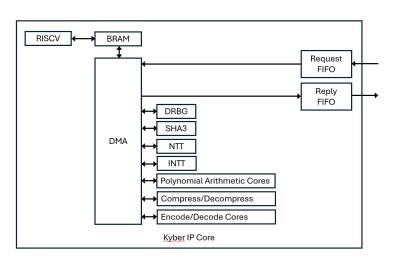ML-KEM
ML-KEM (FIPS 203, formerly CRYSTALS-Kyber): This algorithm is based on lattice problems and offers a balance of security, efficiency, and ease of implementation, making it a suitable choice for general encryption tasks.
All offers in
ML-KEM
Filter
Compare
26
ML-KEM
from
12
vendors
(1
-
10)
-
ML-KEM Key Encapsulation & ML-DSA Digital Signature Engine
- The KiviPQC™-Box is a hardware accelerator for post-quantum cryptographic operations.
- It implements both the Module Lattice-based Key Encapsulation Mechanism (ML-KEM) and the Module Lattice-based Digital Signature Algorithm (ML-DSA), standardized by NIST in FIPS 203 and FIPS 204, respectively.
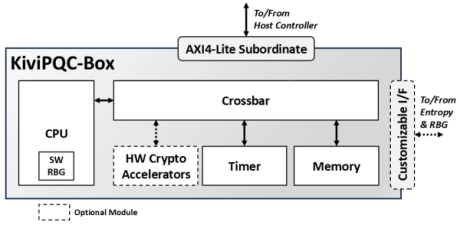
-
ML-KEM Key Encapsulation IP Core
- The KiviPQC™-KEM is a hardware accelerator for post-quantum cryptographic operations.
- It implements the Module Lattice-based Key Encapsulation Mechanism (ML-KEM), standardized by NIST in FIPS 203.
- This mechanism realizes the appropriate procedures for securely exchanging a shared secret key between two parties that communicate over a public channel using a defined set of rules and parameters.
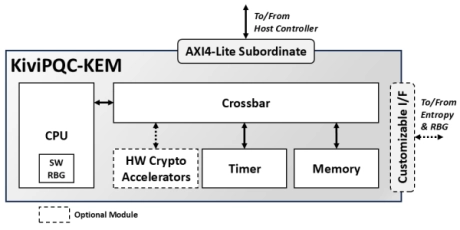
-
Crypto Coprocessor with integrated Post-Quantum Cryptography IPs
- The Crypto Coprocessors are a hardware IP core platform that accelerates cryptographic operations in System-on-Chip (SoC) environment on FPGA or ASIC.
- Symmetric operations are offloaded very efficiently as it has a built-in scatter/gather DMA. The coprocessors can be used to accelerate/offload IPsec, VPN, TLS/SSL, disk encryption, or any custom application requiring cryptography algorithms.
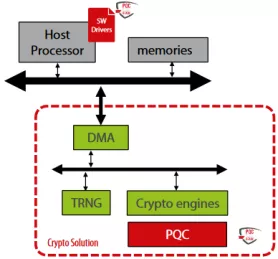
-
ML-KEM / ML-DSA Post-Quantum Cryptography IP
- ML-KEM (Crystals-Kyber) and ML-DSA (Crystals-Dilithium) are Post-Quantum Cryptographic (PQC) algorithms, meaning they are mathematically designed to be robust against a cryptanalytic attack using a quantum computer.
- Both have been standardized by the NIST in it post-quantum cryptography project.
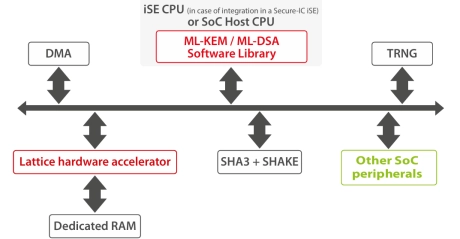
-
Single instance HW Lattice PQC ultra accelerator
- PQPerform-Flare is a powerful hardware-based FIPS 140-3 CAVP-certified product, designed for high throughput and low latency PQC.
- It adds PQC for applications that typically handle a large number of transactions, such as high-capacity network hardware applications and secure key management HSMs.

-
Highly configurable HW Lattice PQC ultra acceleration in AXI4 & PCIe systems
- PQPerform-Inferno is a powerful, scalable hardware solution engineered for unparalleled performance in the post-quantum era.
- As a FIPS 140-3 CAVP-certified product, it provides a trusted foundation for next-generation security.
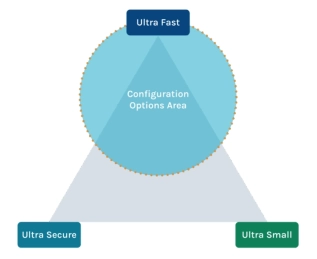
-
PQPerform-Inferno + RISC-V processor for enhanced crypto-agility
- PQPerform-Flex provides robust and agile high-performance acceleration for the ML-KEM and ML-DSA post-quantum cryptographic algorithms but also future standards (programmable post-silicon, such as HQC), designed for seamless integration into modern SoC designs for both ASIC and FPGA targets.
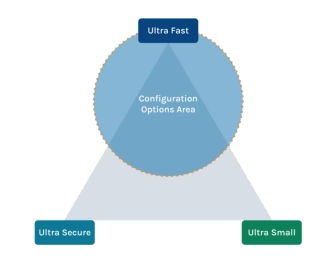
-
PQC CRYSTALS core for accelerating NIST FIPS 202 FIPS 203 and FIPS 204
- eSi-Crystals is a hardware core for accelerating the high-level operations specified in the NIST FIPS 202, FIPS 203 and FIPS 204 standards.
- It supports the Cryptographic Suite for Algebraic Lattices (CRYSTALS), it is lattice-based digital signature algorithm designed to withstand attacks from quantum computers, placing it in the category of post-quantum cryptography (PQC).
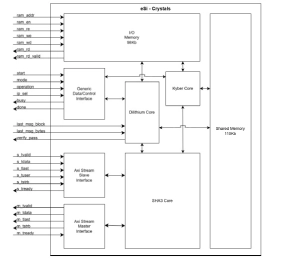
-
APB Post-Quantum Cryptography Accelerator IP Core
- Implements ML-KEM and ML-DSA post-quantum cryptography digital signature standards. The system interface is an microprocessor slave bus (APB, AHB, AXI options are available).
- The design is fully synchronous and requires only minimal CPU intervention due to internal microprogramming sequencer.
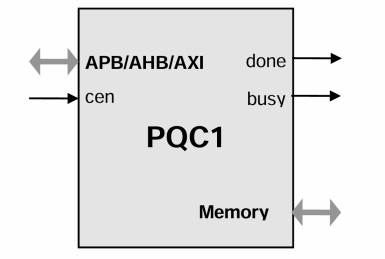
-
KYBER IP Core
- supports encapsulation and decapsulation operations
- supports all modes K=2,3,4.
- is compliant with Kyber specification round 3.
- has fully stallable input and output interfaces.
- Key generation feature is going to be implemented in the near future.
